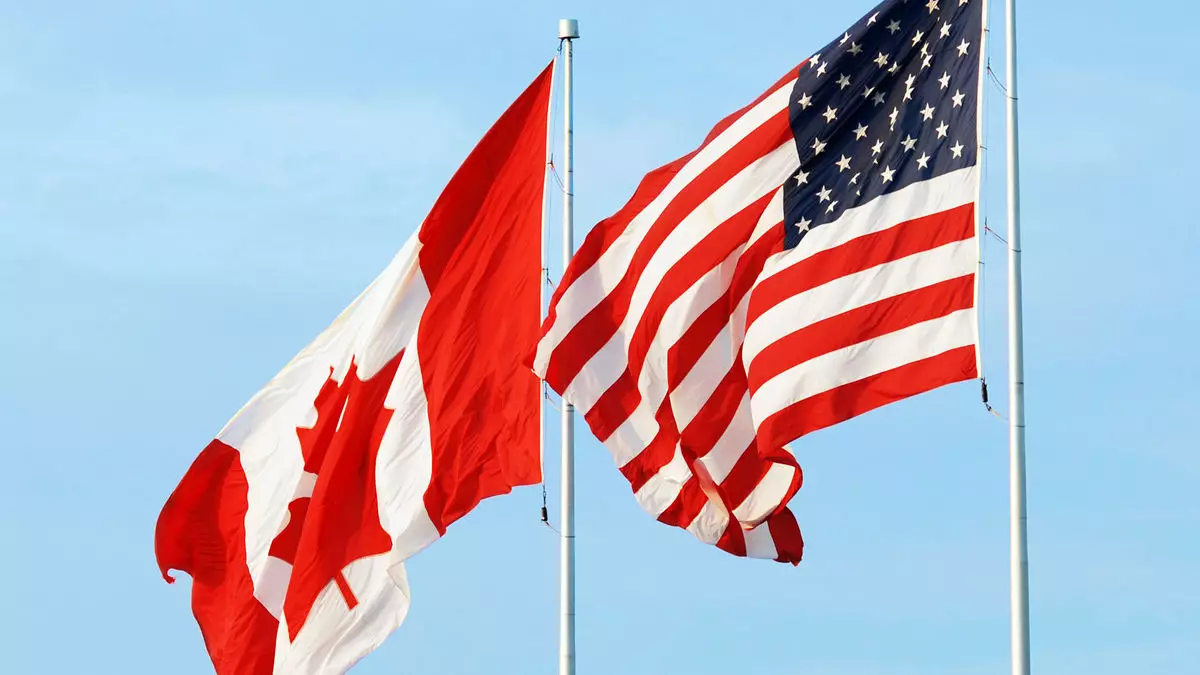In a surprising turn of events for the aviation sector, advanced bookings between Canada and the United States have plummeted over 70% for the upcoming summer season, according to data analysts at OAG. This unprecedented decline is not just a fleeting blip but a significant indication of underlying economic and social tensions. John Grant, a senior analyst at OAG, recently highlighted the severity of this situation, noting that flight availability is facing severe constraints compared to last year. With fewer than 300,000 advanced bookings for April and similar declines projected through September, the implications for both airlines and the travel industry as a whole are staggering.
The backdrop of this crisis is multifaceted. The trade tensions spurred by the previous U.S. administration have undoubtedly played a role in shaping sentiments toward travel between these neighboring countries. Trump’s antagonistic stance, exemplified by his controversial remarks about annexing Canada as the 51st state, has sowed seeds of distrust and frustration among Canadians, leading to significant hesitance in booking flights to the U.S. This political turbulence cannot be dismissed as mere noise; it directly impacts economic activity and consumer behavior within the travel sector.
The Currency Conundrum
Adding to the woes of Canadian travelers is the weakness of the Canadian dollar against its U.S. counterpart. As of late March, the exchange rate was alarmingly skewed, translating $100 CAD into approximately $70 USD. This economic disparity has prompted some companies, notably Oceania Cruises, to step in with innovative offers to attract Canadian customers. By allowing booking in Canadian dollars at par value, these promotions provide a much-needed incentive for travelers who are otherwise deterred by inflated costs due to unfavorable exchange rates.
For Canadians, this limited-time opportunity to book cruises—as diverse as a 16-day journey from Reykjavik to Montreal or an 18-day cruise through the South Pacific—becomes a viable alternative amid soaring flight prices and dwindling options. While it is a smart business move, it raises the question of whether the airlines missed the mark in proactively catering to this demographic, given the ongoing currency challenges.
Airlines: Caught in a Quandary
Despite the drastic reduction in demand, the response from airlines has been relatively muted. While over 320,000 one-way seats have been pulled from the U.S.-Canada marketplace, this constitutes a mere 2.6% reduction—far from what one might expect given such a significant drop in bookings. The largest cuts are allocated for peak travel months of July and August, yet airlines appear hesitant to radically restructure their operations at this juncture.
One could argue the airlines may still be hanging onto false hopes of recovery. The reluctance to fully adjust capacity could signal a belief that the summer season might still show signs of life or simply a struggle to reallocate resources amid ongoing uncertainty.
However, with airlines like WestJet reallocating some U.S. routes toward Europe, it becomes increasingly clear that the need for adaptability and forward-thinking strategy is more pressing than ever. The aviation sector must evolve to meet changing consumer preferences rather than cling to outdated routes that offer diminishing returns.
Potential Lessons and Path Forward
The current landscape of the Canada-U.S. aviation market serves as a striking reminder of the interconnectedness of travel, economy, and politics. As booking numbers plummet, it is crucial for stakeholders in the aviation industry to recognize that merely waiting for the storm to pass isn’t an effective strategy. They must leverage insights from current trends and consumer behaviors to cultivate a more resilient infrastructure.
Moving forward, innovation in terms of customer engagement, pricing strategies, and routes will be a vital necessity. To reignite travel interest, airlines should not only adjust pricing to accommodate currency fluctuations but should also consider strengthening partnerships with tourism boards and travel agencies to promote cross-border travel as a feasible plan. As fatigue sets in from the current political and economic climate, the aviation industry has the opportunity to proactively reinvent itself and promote a sense of community between Canada and the United States, restoring faith in travel once again.


Napsat komentář